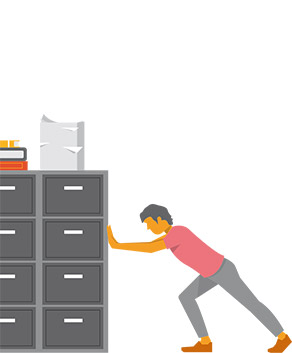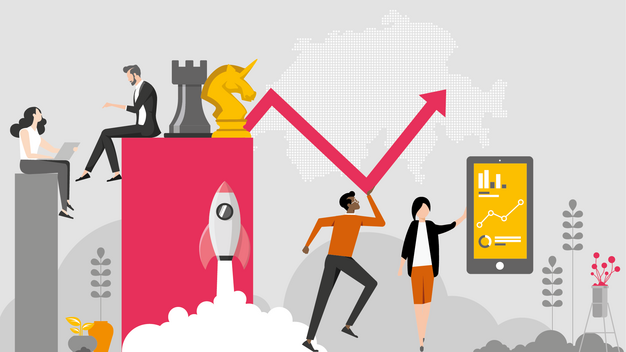Work: Redefining the workplace of tomorrow
Workplace of the future
Working to live, not living to work
In the past, a job was mainly about making a living. That has changed completely: employees now expect meaningful work and a satisfying work-life balance. Now more than ever, dedicated and talented employees want to know what their employer stands for. Young workers attach importance to flexibility with less compulsory attendance, adaptable career models and the opportunity to help shape their own roles.4 Today, companies need one thing above all: an open-minded corporate culture so they can remain attractive to gifted employees.
1 “The way we work – in 2025 and beyond,” PwC Switzerland + HR today, 2017
Far beyond the workstation
A full-time contract, a five-day working week, 8am to 5pm office hours – employment models like these belong in the past. In an instant, COVID-19 has proven the capabilities of people to work from home and adjust their work schedule, to be flexible and agile. Working from home is definitely not a question of reducing real estate costs, but it is really fostering a stronger sense of resilience. While reflecting on current developments, here is a range of forward-looking work models with countless variations that are worth thinking about::
- Job sharing or tandem jobs
- Home and mobile office
- Project work and annual working time with flexible working hours
- Freelancing: freelancers negotiate the terms of the contract and take care of invoicing and social security contributions themselves.
- Coworking: cooperation on a flexible time basis between freelancers, creative workers, small companies, etc.
- Crowdsourcing: certain tasks are outsourced to a group of voluntary users on the internet.
- Gig work: a matching platform brings employees and employers together at short notice. Remuneration and social security contributions are paid via the platform. Gig work is especially suited to people who are starting or returning to their career.
- Contracting: employees enter into a longer commitment with a single employer for what is usually a highly qualified job.
- Talent sharing: two or more companies exchange talent with each other.

Room for something new
We are in the midst of one of the most important periods of change in the workplace. COVID-19 has significantly shaken our traditional ways of working. Nowhere is this upheaval more evident than in the office. As new technologies are providing increasing mobility and employees’ expectations are changing, new working models, infrastructure and collaboration are emerging. For employees themselves, this is now a question of where, when and for whom they will be working in the future – and what the relationship with their team and managers will feel like. Reimagining the office, keeping an agile mindset and being flexible will be the new normal.
Structures in motion
The changes taking place in corporate culture include a new error-tolerant environment in which mistakes are considered an indispensable part of the learning process. Team performance is also becoming more important than individual performance. Agile teams, self-organised collaboration, joint decisions and flat hierarchies are displacing rigid vertical structures. New communication channels are also becoming more important. Members of generation Z (born between 1995 and 2009) mainly communicate via digital tools. They require not only regular, but constant feedback as this is what they have grown up with. And ultimately a modern corporate culture will in- clude further training that does justice to the age mix. In most cases, older employees need different and more intensive training on digital applications and methods than digital natives.
New place to work
COVID-19 has transformed the way we work, collaborate and co-create remotely and has proven that the workplace of the future is able to offer the following:
- Remote workstations
- Cloud-based applications for teamwork and video conferencing
- State-of-the-art IT with mobile devices and fast network connections
- Cross-company information management tool
- Freely selectable workplaces, open-plan offices, think boxes, coworking spaces, lounges, relaxation zones, etc.
- Feel-good atmosphere with ergonomic office equipment and more room intelligence (internet of things and sensor technology)
- Digital assistance systems that promote inclusion, health and quality of work
- Workplace-as-a-service: works like software-as-a-service, but with integrated hardware.
Attractive not exploitative
Traditional, money-led approaches are giving way to new evaluation and incentive systems. Regular discussions and check-in meetings are replacing the annual employee appraisal. Constructive performance discussions and coaching are also proving fruitful. Nowadays, feedback comes much more often from colleagues, not just the boss, and it is often more qualitative than quantitative. For example, Millennials (born between 1981 and 1996) are increasingly striving for incentives that will permit them to achieve a healthy balance between work and family life.




